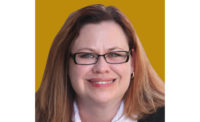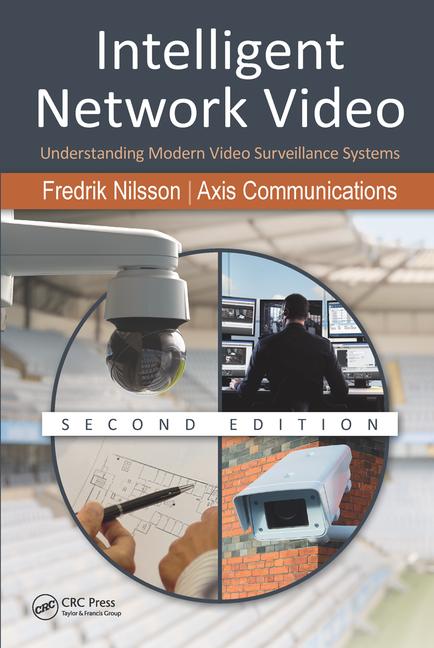Any form of verification of an alarm is good. When it is possible to determine accurately if an alarm is a real intrusion or event, as opposed to a false alarm, the effectiveness of a security system skyrockets, arrests occur, property is protected and the alarm industry’s relationships with law enforcement and insurance are strengthened.
Over the years, alarm verification has evolved with approaches such as enhanced call verification (ECV) and audio verification technologies. Those types of verification remain significant, but over the last few years, the use of video verification has risen at a rapid rate due to technological advancements, changing central station capabilities, and falling prices as IP cameras now cost under $100, which were a key initial barrier to mass installation and usage.
“Video verification is advancing daily in cost, quality and capability. Costs are falling, image quality is improving, and the alarm industry is quickly adapting automation capabilities to interpret video more effectively and make the information available to consumers real-time through handheld devices and online portals,” says Steve Walker, vice president, Customer Service, Stanley Security Solutions, Fisher, Ind.
The trend to verify with cost-effective video systems has strong support from law enforcement.
Police Chief Steve Dye of Grand Prairie, Texas, the chair of the Texas Police Chiefs Associations’ Alarm Committee, calls video the single most important force multiplier in police work that has happened in the past few decades and sees continuous adoption in individual homes and businesses.
“Law enforcement understands that the installed base of alarm systems is important to the alarm industry (and our citizens), and we support response to these systems. We also believe, however, that the world is moving towards video and that new video alarm systems are the future,” he says. “We see the alarm industry finally taking a proactive approach and partnering with us in this effort to use this new solution to make us more effective. This is about more than reducing false alarms; it is about making arrests and combating property crime.”
The debate over how to use the various verification technologies — and align industry, law enforcement, insurance, and end user expectations — is critical and unresolved as alarm verification moved forward under the influence of powerful stakeholders with differing agendas.
“Law enforcement continues to challenge the industry to develop solutions that reduce false alarms while improving officer efficiencies in the face of constrained budgets. Insurance underwriters are seeking more effective ways to reduce burglary-related claims and are placing greater emphasis on apprehensions over deterrence as a more effective means of reducing overall criminal activity.
“Consumers in the digital age, both commercial and residential, are emerging with lofty expectations for immediate, actionable information from their alarm systems,” says Donald Young, chief information officer, Protection 1, Chicago. This is something video can facilitate.
In the midst of it all, alarm companies and equipment manufacturers are attempting to keep pace with product and service offerings capable of addressing these evolving expectations — and attempting to do so without compromising police response to the millions of alarm systems already installed across the United States, Young says.
“Alarm verification is not a new idea. It is the natural outcome of these different forces and it is bringing these stakeholders together for constructive dialogue over a common purpose with a passion that is unprecedented,” Young believes.
Video is at the center, especially the debate on how to promote it. There’s a difference between positioning it as a false alarm reduction tool versus a value-add to a security system that ensures response from law enforcement and results in arrests.
Determining which position to take — false alarm reduction via verified response versus arrests and priority response — has led to some growing pains, including the lack of one singular group to oversee the industry’s use of the technology. Currently, there are two. The Central Station Alarm Association (CSAA) International formed the CSAA Video Committee with two subcommittees: the Managed Services Subcommittee and the Enhanced Video Verification Subcommittee. The CSAA firmly promotes video as a means to reduce false alarms, and still is cautious about the technology’s full potential.
“We need to reduce calls for police service any way we can, there is no question about that, and if you compare where we are at today versus 10 years ago we have come a long way. ECV has helped a lot and today we have a whole host of additional ways to verify alarm conditions ranging from multiple trips on zones to video and audio. All of them have a purpose, and pros and cons. Each installation needs to be thought through as there is no silver bullet out there today,” cautions Morgan Hertel, vice president of operations of Rapid Response Monitoring Services, Syracuse, N.Y., and chair of the CSAA Video Committee.
“Video certainly has the sex appeal that users are looking for, and it’s certainly a good tool to use but you can’t put video everywhere. In some cases, it will be cost prohibitive; other types of facilities have privacy concerns and it’s not the end-all-do-all. Plus, it also takes a lot more time to process on the central station side so there are significant cost factors involved,” Hertel explains.
A second industry group, Partnership for Priority Video Alarm Response (PPVAR), was created with a strong emphasis on the public/private partnership to promote video-verified alarm systems as a means to combat property crime and reduce insurance losses. PPVAR supports traditional police response to classic burglar alarms and priority response to video alarms that are verified by a certified central station — promoting the value of video to verify alarm activity.
“The PPVAR understands that its mission of promoting priority response (without disrupting traditional response) may not completely align with CSAA’s current views and may represent barriers to formal alignment,” Walker, PPVAR’s vice president, explains.
PPVAR seeks strong engagement from law enforcement, the insurance industry and the electronic security industry as it develops standards “to fairly represent all interests in the battle against property crime,” according to the group.
“We have law enforcement from Texas and some large cities participating on the PPVAR video verification committee to define best practices and standards that will benefit all the stakeholders fighting property crime. This hasn’t happened in the past. We are involved and invested in making this work and have a stake in its outcome,” Dye says.
Currently, the police departments in four out of the five largest cities have joined PPVAR with a strong desire to help set standards that will work and develop best practices. These include the Los Angeles Sherriff’s Department, the Phoenix Police Department, the Houston Police Department (and Harris County Sherriff’s Department, which also polices Houston), and the Chicago Police Department.
Initially it was speculated the CSAA Video Committee and PPVAR would join last year and avoid two different messages going out to authorities having jurisdiction (AHJs), law enforcement, and insurance, but an agreement was not reached. See www.SDMmag.com/ppvar-flies-solo for more.
As a result, professionals such as David Sexton, vice president of loss prevention, Jewelers Mutual Insurance Company, Neenah, Wis., currently interact with both CSAA and PPVAR. “CSAA Members provide UL certified burglar alarm systems for many of our policyholders. I have contributed to several editions of its “A Practical Guide to Central Station Burglar Alarm Systems,” including the most recent third edition, and have attended and conducted presentations at their annual meetings.
“We also became involved with PPVAR to remain informed about their work with law enforcement, the insurance industry and others to establish priority response to video-verified alarms. As a mutual insurance company we must remain informed on all significant developments that impact the alarm industry to serve the best interests of our policyholder/owners,” Sexton shares.
Of course, that would be easier with one group to interact with — and that is still the goal.
PPVAR President Young, and PPVAR Vice President Walker made a presentation at the CSAA annual meeting in October. The result was a vote from the CSAA board of directors to take initial steps to establish PPVAR as a standing committee within the association. The terms and structure of the group under CSAA are to be determined. Young will lead this effort for the PPVAR.
It makes sense. PPVAR and CSAA started down parallel paths, with many industry people on both groups, Hertel points out.
“There are a few details to work out,” he adds, “but it makes much more sense to focus everyone’s limited resources collectively without dividing them. We have the talent, so let’s use it wisely,” Hertel says.
Ron Walters, director at the Security Industry Alarm Coalition (SIAC), Frisco, Texas, adds, “At any time the industry can speak with a more unilateral voice we all benefit. The last thing we want is any kind of conflicting or divided message. We are all going to benefit as they combine their work.”
He adds that moving forward video standards should remain a focus including minimum technology requirements, clarity, day/night capabilities, and expectations for performance.
Young agrees that a partnership between the PPVAR and CSAA at some level seems unavoidable given the common membership and many shared goals.
“Beyond the common interests of their respective constituents, PPVAR would benefit from alignment under the CSAA structure — a structure that has carefully developed strong relationships across the security space and effectively manages the development and maintenance of many key standards. Also, the broader membership of CSAA would benefit from having a voice in guiding the development and evolution of alarm verification and priority response through streamlined communications that only would be available through a PPVAR that exists under the CSAA umbrella,” Walker describes.
“The time is ripe for open dialogue and guiding the inevitable and unstoppable growth of alarm verification technologies and services in a way that best meets the needs of all,” Young adds.
The needs of all include making arrests, reducing false alarms, and growing industry relationships. These unifying objectives will help in the sometimes-rocky transition for the industry towards video verification.
Video verification and priority response is a proactive approach to fighting crime that promises to benefit law enforcement, our citizens and the insurers who ultimately pay the bills, Dye emphasizes.
“Alarm verification methodology and criteria will continue to capture the interest of the insurance community with regard to how these methods and criteria can potentially delay or compromise reliable alarm response. The key role that video currently enjoys as a one method of alarm verification will only continue,” Sexton predicts.













